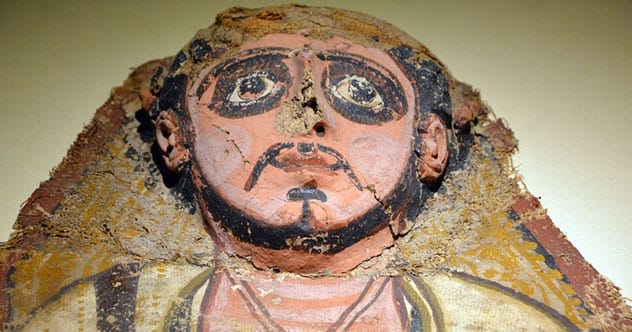Have you ever wondered what art looked like thousands of years ago? It’s easy to think art slowly got ‘better’ over time, like a simple line going upwards. But ancient artists weren’t just trying to copy reality or lead to where we are now. They had their own unique ideas about what was beautiful, powerful, and important. Their art tells amazing stories about their lives, beliefs, and what they held dear.
Get ready to journey back in time! We’re about to explore ten incredible ancient art styles that continue to capture our imagination. These artworks offer fascinating glimpses into worlds long past. They are more than just old objects; they are windows to our shared human story, showing us different ways people saw and shaped their world.
10. Cycladic Figures: Timeless Simplicity
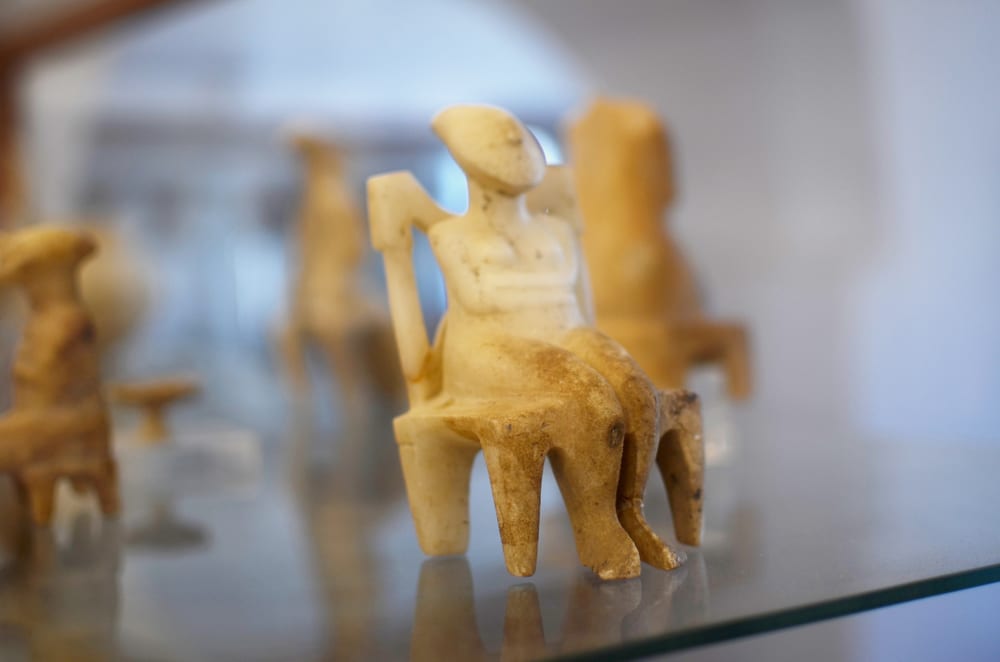
Imagine smooth, white marble figures that look surprisingly modern, yet they are thousands of years old. These are Cycladic figurines, known for their simple and elegant style. Created between 3300 and 2300 BC in the Cycladic islands of Greece, they often show people with long heads and pointed noses. Today, their faces are usually blank, though some experts believe they might have been painted long ago.
Many of these figures are standing females with arms folded across their stomachs. Sometimes, details like pubic hair were carefully scratched into the marble. What’s truly remarkable is how their style stayed so consistent for over a thousand years! Besides these iconic standing figures, artists also carved musicians, like harp players or those playing double pipes. Their sleek, curving shapes are so striking that they could easily fit into a modern art gallery. Finding them across the islands suggests they were as admired in their own time as they are in museums today.
9. Voluptuous Venus Figurines: Ancient Ideals of Beauty
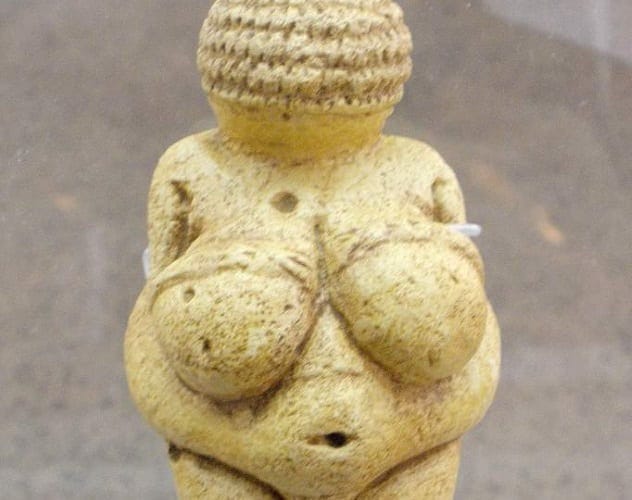
When we think of the Roman goddess Venus, we picture statues of ideal beauty from ancient times. But what did people find beautiful thousands of years before that? The ‘Venus figurines’ offer a fascinating clue, and they look very different from later classical statues. These small figures, found across Europe, show women with very rounded bodies: large breasts, wide hips, and big buttocks. Often, their private parts are also clearly shown.
The oldest one, the Venus of Hohle Fels, was carved from a mammoth tusk about 35,000 years ago! Others are made of stone or clay. Most are quite small, suggesting people carried them around. Why were they made? Nobody knows for sure. Were they mother goddesses? Symbols of fertility to help have children or grow crops? Or simply figures representing beauty and safety? With around 200 found, their true meaning remains a captivating mystery from our distant past.
8. Roman Frescos: Windows to Another World
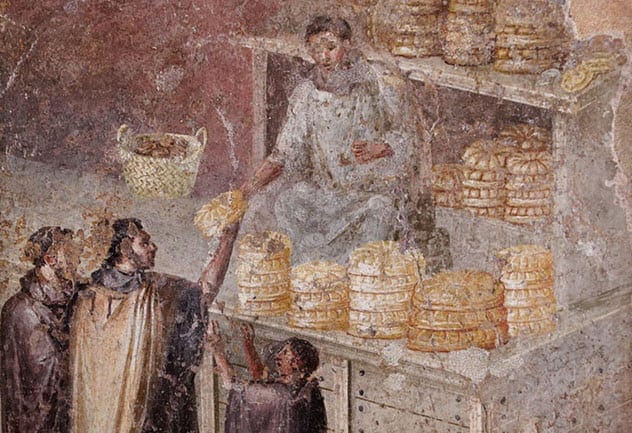
Ancient Romans loved to surround themselves with art. From statues of gods to everyday graffiti, art was everywhere. This love for decoration extended to the inside of their homes. They weren’t happy with just plain painted walls. Instead, they used art to create illusions, making it seem like they were dining outdoors. This clever trick is called trompe l’oeil, which means ‘to deceive the eye’.
These wall paintings, called frescos, were made by painting directly onto wet plaster. At first, they showed simple designs like pillars and doorways. But soon, the paintings became much more detailed. A painted door might seem to open with someone peeking out, or a fake window might show a beautiful view of fields or beaches. Perhaps the most stunning example is in a villa that belonged to Empress Livia. The dining room walls there don’t look like walls at all. They are painted to look like a lush garden, full of trees, fruit, birds, and flowers, making you feel like you’re eating in paradise.
7. Moche Pottery: Stories in Clay
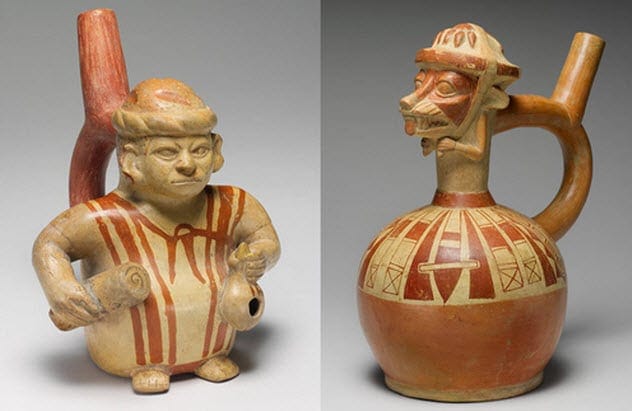
The Moche people lived on the coast of Peru from around 100 to 700 AD. Though their culture isn’t widely known today, they left behind a huge amount of amazing pottery. You can find these pieces in museums worldwide, though sometimes the more explicit ones are kept hidden due to their subject matter.
Moche pottery comes in various forms. Some pieces are simple in shape but covered in complex painted scenes. Others are sculpted into intricate designs, showing everything from animals and gods to realistic portraits of people. And what these people are doing can be very revealing! Over 500 pots show humans in sexual activities. While some show men with large genitals, common in ancient art, others depict women with detailed vaginas. Interestingly, typical vaginal sex is rarely shown. It seems anal sex was a more common theme for Moche potters, giving us a unique glimpse into their views on sexuality.
6. Engraved Gems: Miniature Masterpieces
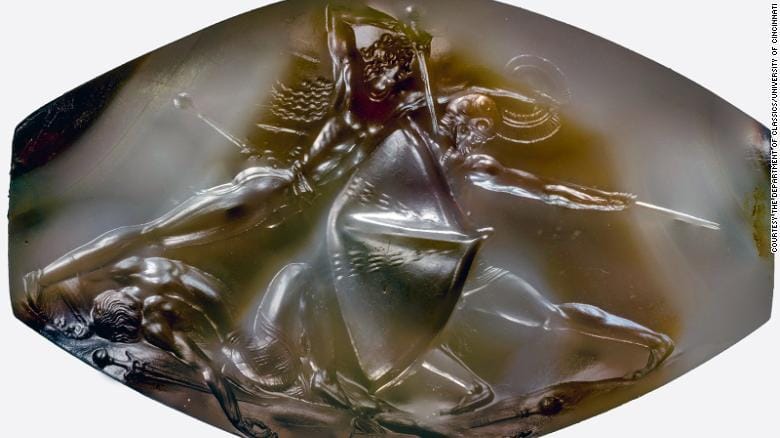
People have always loved beautiful stones. As soon as gems were discovered, humans started using them for decoration. But just having pretty stones wasn’t enough. For at least 5,000 years, people have been carving tiny, detailed images into these gems. And these weren’t just simple shapes; some are incredibly lifelike.
These miniature carvings could show anything from mythical creatures to portraits of real people. Roman Emperors often had their faces carved into gems. Most of these engraved gems were small enough to be worn in rings and were used as seals to press into wax. The artists used tiny drills and gritty dust to create these images. They must have had amazing eyesight, as some details are as small as half a millimeter! One famous example, the Pylos Combat Agate, shows two men fighting with incredible, anatomically correct detail on a surface just 3cm wide. Even a fallen soldier on the gem is sculpted so skillfully that you can see individual muscles.
5. Roman Glass Portraits: Faces from the Past
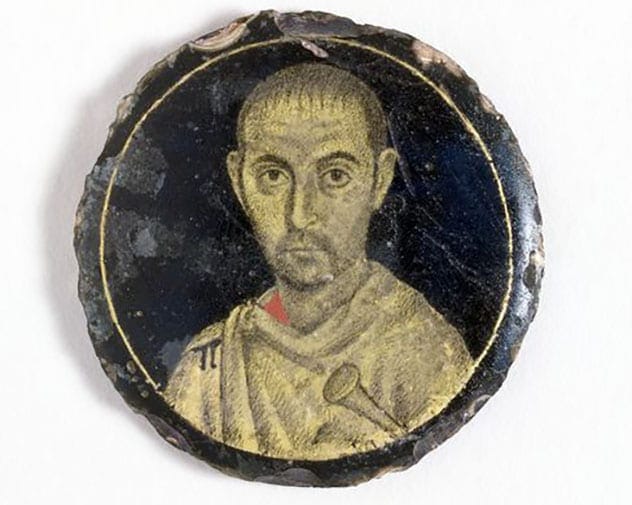
Before photography, capturing someone’s exact likeness was hard. Most people only had written descriptions, which often focused on unusual features like “a scar on the forehead.” However, some lucky Romans had their faces preserved in a very special way, and these images still feel incredibly real today.
These are Roman gold glass portraits. Artists made them by putting a thin layer of gold onto glass, then carefully pricking and scratching it to create a delicate image. These portraits could capture the subtle shading of a face and often included the little imperfections that make each of us unique. Most of these portraits were made on the bottoms of bowls and cups, perhaps to mark a special event. When the person in the portrait died, the glass image was often broken out of the vessel and used to mark their grave, carrying their likeness into the afterlife.
4. Fayum Mummy Portraits: Eyes That Stare Across Millennia
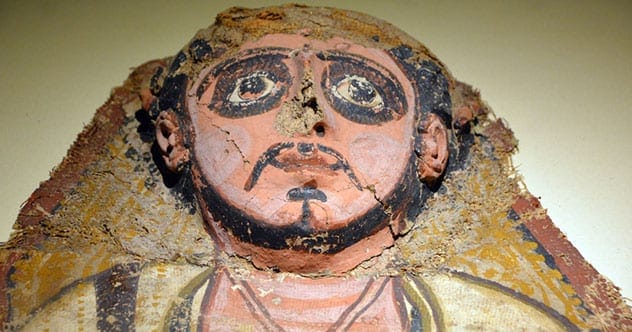
Ancient Egyptian art is often recognized by its distinctive style, with people shown in profile and in somewhat stiff poses. However, Egyptian art didn’t stay the same over thousands of years. When Egypt became part of the Roman Empire, a new style emerged, blending Egyptian and Roman traditions.
Egyptian culture placed great importance on the afterlife and remembering the dead. While pharaohs had elaborate sarcophagi covered in gold, ordinary people often had wooden face-masks on their mummies. These are known as Fayum Mummy Portraits. They were painted on wooden panels or directly onto the mummy’s wrappings. Unlike the stylized figures seen elsewhere in Egyptian art, these portraits are incredibly personal and lifelike. The shadows and highlights on the faces make them look three-dimensional and almost alive. These portraits also tell us a lot about how people in the ancient world really looked, revealing changing fashions in hairstyles and makeup over centuries.
3. Etruscan Sarcophagi: Feasting in the Afterlife
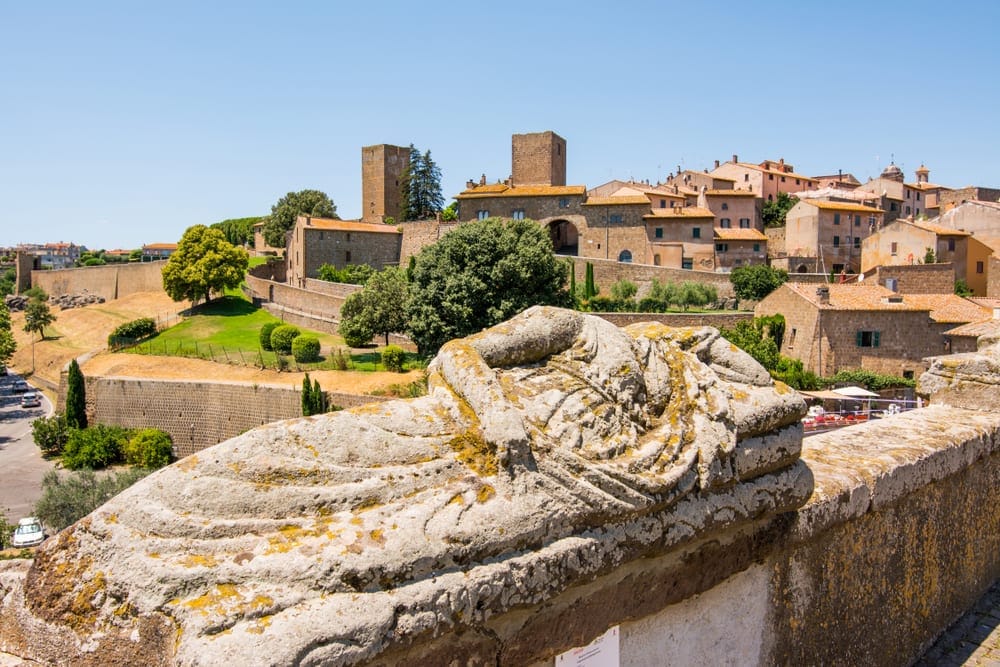
Putting a painting in a grave is one way to remember someone. But the Etruscans, who lived in ancient Italy before the Romans, took it a step further to capture a person’s appearance. Their tombs often featured a terracotta (baked clay) statue of the person who died. These statues usually show them reclining on a couch, as if enjoying an eternal feast.
These special coffins are called sarcophagi. They didn’t usually contain the body itself, because the Etruscans typically cremated their dead. This might be why creating a lasting, lifelike monument was so important to them. The terracotta tombs were brightly painted. Interestingly, unlike some other ancient societies, Etruscan women seemed to be as important as men. Married couples often shared a tomb and were shown side-by-side, enjoying their afterlife together. In one case, a sarcophagus of a woman named Seianti Hanunia Tlesnasa was found with her skull inside. Scientists were able to reconstruct her face, showing that the statue on the tomb really did look like her!
2. Hand Stencils: Ancient Signatures on Cave Walls
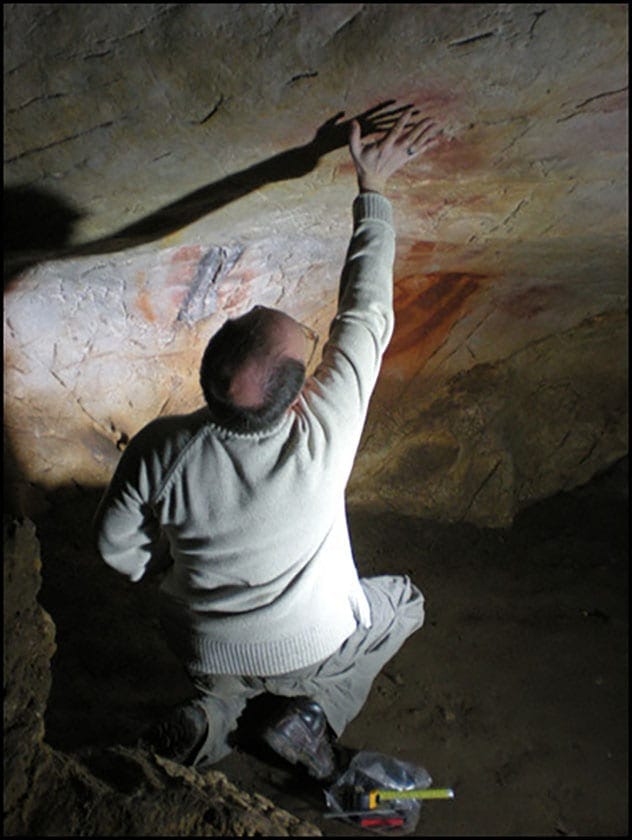
One of the most common and personal types of art from the Stone Age is the hand stencil. Cave walls from South America to Europe, Asia to Australia, are covered in the handprints of our ancient ancestors. Some of these hand images date back as far as 39,000 years!
How did they make them? Sometimes, the artist would dip their hand in powdered color and press it onto the rock. More often, they would place their hand on the wall and blow watered-down pigment (color) around it using a tube, leaving a negative image – a stencil. By studying these hands, we know that men, women, and even children made this art. We can even tell that most Stone Age people were right-handed because most of the stencils are of left hands. This means they likely held the tube for spraying the pigment in their dominant right hand. The purpose of these handprints is still debated. They are often found in very hard-to-reach parts of caves, while easier, flat sections of wall were left blank, adding to their mystery.
1. Dogu Figurines: Mysterious Beings from Ancient Japan
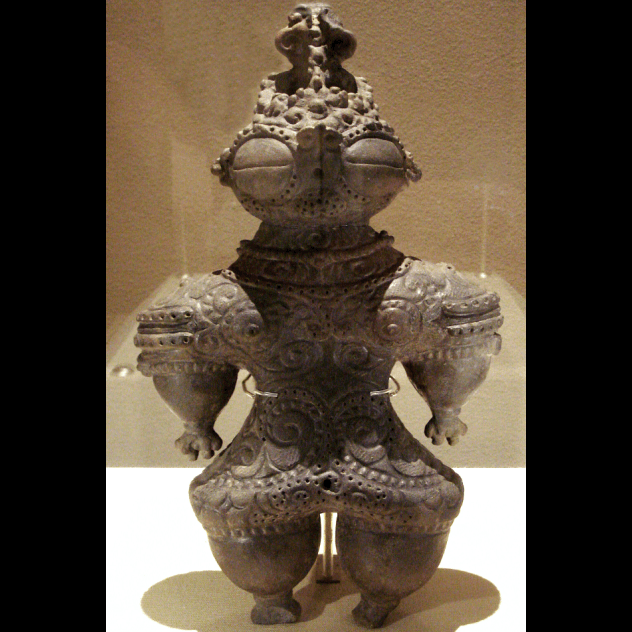
Some of the most peculiar and fascinating pottery ever made comes from the Jomon period of Japan, which lasted from about 14,000 BC to 300 BC. Because Japan had plenty of food, people could settle in villages and create a lot of pottery. Jomon pottery is often recognized by cord-like patterns pressed into the wet clay.
Besides pots, they also made small human-like figures called Dogu. These figures come in several types. Some look like horned owls, others have heart-shaped heads, and some have very large, goggle-like eyes. It’s these “goggle-eyed” figurines that have sparked the most curiosity and unusual theories. To some, they look like they’re wearing ornate spacesuits with helmets, leading to ideas about ancient alien visitors. The truth is, no one knows for sure what these Dogu were used for. Were they protective charms, fertility symbols, or something else entirely? While their purpose remains a puzzle, they are undoubtedly the work of skilled ancient artists, not extraterrestrials.
From the elegant simplicity of Cycladic figures to the intriguing Dogu of Japan, ancient art styles offer us more than just a look at old objects. They are vibrant connections to the people who created them. Each style tells a story, revealing different ways of seeing the world, expressing beliefs, and celebrating life and the afterlife. These artists may not have had our modern tools, but their creativity and skill were immense. Exploring these artistic traditions reminds us that the desire to create and communicate through art is a timeless human trait. These ancient masterpieces continue to inspire awe and wonder, proving that true art never really gets old.
Which of these ancient art styles do you find most fascinating, and why? Share your thoughts and favorite ancient artworks in the comments below!


